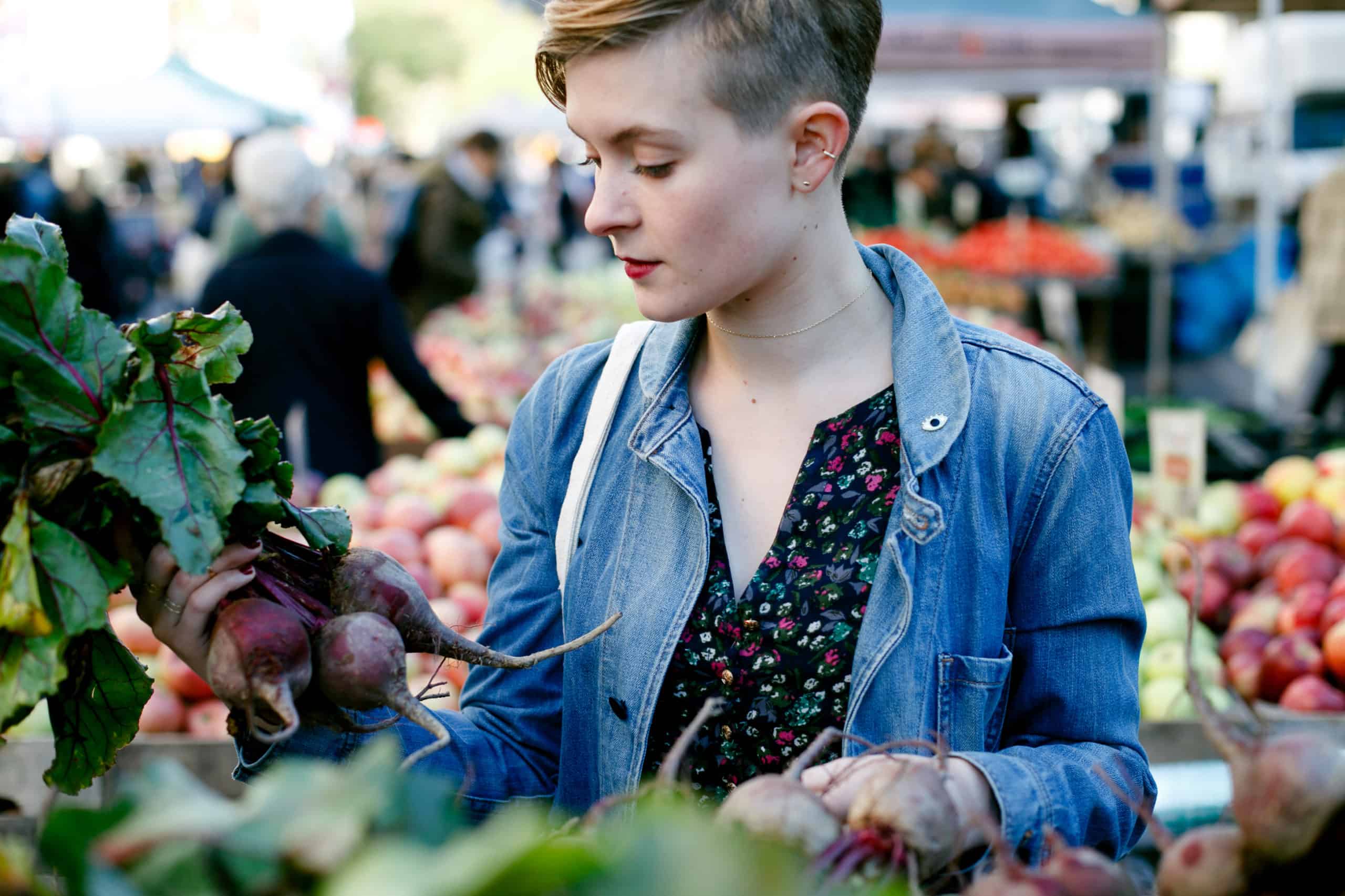When it comes to weight loss, we’re often told lots of contradictory things: “Eat fruit, but bananas have too much sugar,” or “Carbs are good, but not before bed.” Tomorrow, there’ll be some other contradicting weight loss advice in your inbox, on your newsfeed, or at the grocery store. With all of this opposition, it can be hard to know what to do.
One thing we know for sure? Eliminating foods or entire food groups from your diet is not the way to go. In fact, it’s one of the biggest weight loss mistakes that people make. We asked Laura Boukas, a Noom dietitian, to debunk this myth and explain what you can do instead.
Two myths about eliminating foods or food groups
“One of the biggest myths around eliminating food groups is that it will help you reach your goals more effectively,” Laura says. “I often hear people say they’ve heard from [insert any celebrity, social media post, advertisement, news story, etc.] that by eliminating a specific food or food group, they’ll see big results fast.” But, if you look at all of the big food trends from previous decades like vegan, paleo, or keto, there isn’t any scientific evidence that removing any one food or food group is more beneficial (unless you have a specific medical condition, food allergy, or food intolerance).
This brings us to our next myth: thinking that what worked for one person will also work for you. Like Laura said, eliminating foods often becomes a trend because a celebrity, publication, or even a single research study says it’s effective. “In reality, different solutions work for different people, and it’s incredibly important to think about what works for you, your body, and your life,” she says. “Eliminating carbs might not be an option given your family or personal circumstances. You might also find, conversely to what one person claims, it makes you feel very low-energy and completely unsatisfied. We’re all incredibly unique and deciding what (and how much) of something makes you feel good is all about experimentation and listening to what your body needs.”
Why eliminating foods doesn’t work
Eliminating foods can get us stuck in the all-or-nothing thinking trap. “Oftentimes, if we eliminate food groups, it can create a very strong negative stigma around a particular food,” Laura says. Picture this: You’re a week into eliminating a particular food or food group, and everything feels like it’s going great. Then, an event, a change in routine, or the most delicious-looking cupcake shows up at a work event, and you give in. That decision starts a spiral of guilt and shame for not sticking with the “all” (read: no cupcakes) phase. Then, you think, “Well, I just ruined everything with a cupcake, so I might as well keep going.” But, she says, if you didn’t have the negative label around that food or food group in the first place, you might’ve eaten the cupcake and moved on, or might not have felt like eating it at all.
Eliminating foods can also make them more enticing. Have you ever been told you can’t do something and then it’s all you want to do? The classic: “DON’T THINK OF A PINK ELEPHANT.” Did you just imagine one? It was basically impossible not to, right? That’s how our brains are wired. “Food can become more rewarding when it’s ‘off-limits,’” she says. “While you might think you’re demonstrating self-control and discipline by eliminating food, it bears the risk of making you want more of it, especially during times when your motivation might be low, or if you’re tired, stressed, or experiencing a change in routine.”
A more sustainable approach to weight loss
At Noom, we like to focus on adding foods rather than restricting them. To avoid overly restricting yourself, think about how you might add some nutritious foods to your plate, rather than take away foods you enjoy. “For example,” Laura says, “instead of taking away the pasta that I love so much, I might add some extra veggies to my plate and make it a point to start eating those first during my meal.” You might find that you naturally end up feeling satisfied sooner and eating less of the pasta. Or maybe, as you get the hang of things, you could make a little less pasta and up the veggies, so you have a heavier portion of greens.
How to practice the “addition” mindset in real life
Laura has a few ideas to inspire you:
- Spaghetti and meatballs: Make these turkey meatballs and replace half the spaghetti with zucchini noodles (usually available at grocery stores or you can buy an inexpensive spiralizer to make your own)
- Pizza: If you’re ordering pizza, order whatever toppings you normally would, but also add a couple of your favorite vegetables.
- Fried Rice: If you’re ordering fried rice, ask them if they can make it with extra vegetables—you aren’t the first person to have asked!
- Mac and cheese: Add butternut squash or cauliflower (or if you’re really adventurous, make a cauliflower-based cheese sauce) to get in some veggies.
- Any soup, stew, or smoothie: Try throwing in a handful of spinach. I promise, you won’t taste it in the smoothie. I find it also makes soups/stews look much more vibrant and appetizing.
- Baking: Sub half of the oil in a baking recipe with applesauce. For example, if a recipe calls for 1/2 cup oil, use 1/4 cup oil and 1/4 cup applesauce.
- Butter: When a recipe calls for butter, try subbing half the butter with olive oil. So if it calls for 2 tablespoons of butter, use 1 tablespoon of butter and 1 tablespoon of olive oil.
- Mayo: Use avocado instead of mayo on sandwiches, or use half the mayo and double the mustard.
Learn more about Noom’s addition mindset today!
Another article you might like:
Real results with a personalized weight loss program
Take the quiz!

- So you gained 2 pounds overnight. Now what? Everything you need to know about weight fluctuations.





